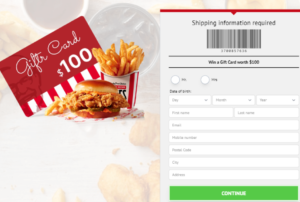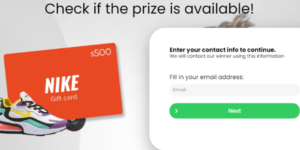What Are The Best Ways Increase Your Conversion Rates?

In selling online, driving traffic to your offer is a partial fraction of the journey. The true measure of success is your conversion rate – the percentage of visitors who take a desired action, such as making a purchase, signing up for a newsletter, or filling out a contact form.
Here are six smart tips to help you increase your conversion rate and maximize the value of your web traffic.
Optimize Your Landing Pages
Landing pages are crucial for conversion optimization. These are the first pages visitors see when they click on an ad or a search engine result. Here’s how to optimize them effectively:
Succinct and Catchy Headlines: The headline of any offer is always the first thing your audience sees. Make sure it clearly communicates the value proposition and captures attention immediately. It should be concise, benefit-driven, and relevant to the visitor’s needs.
Strong Call-to-Action (CTA): Your CTA should stand out and clearly instruct visitors on what to do next. The icon for the required action should be placed in a prominent position. Consider using contrasting colors to make it more noticeable.
Simplified Forms: If your conversion goal involves form submissions, keep your forms short and simple. Your forms should only request for necessary information to not spook your visitors. Too many fields can discourage potential leads from completing the form.
You can create forms using tools like systeme.io
Trust Signals: Include testimonials, reviews, certifications, or guarantees to build trust with your visitors. Trust signals can alleviate concerns and increase confidence in your offering.
Mobile Optimization: Ensure your landing pages are fully optimized for mobile devices. With a significant portion of web traffic coming from mobile users, a mobile-friendly design is crucial for maintaining high conversion rates.
Improve Your Website’s User Experience (UX)
A positive user experience is essential for conversion. If your website is difficult to navigate or slow to load, visitors are likely to leave before converting. Here are some UX improvements to consider:
Intuitive Navigation: Ensure your website’s navigation is easy to understand and use. Your website visitors should be able to locate what they want quickly without any hassle. Use clear labels and organize your menu logically.
Fast Load Times: Page speed is a critical factor in user experience. Optimize images, leverage browser caching, and use a content delivery network (CDN) to improve load times. Google PageSpeed Insights is a tool that helps you identify areas that require improvement.
Responsive Design: Your website should look and function well on all devices, including desktops, tablets, and smartphones. A responsive design ensures a consistent experience across different screen sizes.
Readable Content: Use legible fonts, appropriate font sizes, and ample white space to make your content easy to read. Apply headings, bullet points, and images to areas of large blocks of text.
Clear Path to Conversion: Make it easy for visitors to complete the desired action. Reduce the number of steps required to convert and provide clear guidance at each stage of the process.
Leverage A/B Testing
A/B testing, or split testing, involves comparing two versions of a webpage or element to determine which one performs better. This data-centric method can help you identify what your audience can relate with the most. Here’s how to effectively carry out split testing:
Test One Element at a Time: Focus on testing one element at a time, such as headlines, CTAs, images, or form fields. This allows you to pinpoint which changes have the most significant impact on conversion rates.
Use Sufficient Sample Sizes: Ensure your test runs long enough to gather sufficient data. A small sample size can lead to inconclusive or misleading results.
Measure the Right Metrics: Identify key performance indicators (KPIs) that align with your conversion goals. Track metrics such as click-through rates, form submissions, and sales to measure the effectiveness of your changes.
Continuously Iterate: A/B testing should be an ongoing process. Continuously test and optimize different elements to improve your conversion rate over time.
Personalize Your Marketing
Personalization involves tailoring your marketing messages and experiences to individual users based on their preferences, behavior, and demographics.
Personalized marketing can significantly boost conversion rates by making visitors feel more valued and understood. Here’s how to implement personalization effectively:
Use Data and Analytics: Leverage data from website analytics, CRM systems, and marketing automation tools to understand your audience’s behavior and preferences. Using this data provided, divide your audience into parts and create campaigns targeting these audiences.
Dynamic Content: Implement dynamic content that changes based on user behavior. For example, show personalized product recommendations, customized greetings, or tailored offers based on previous interactions.
Email Personalization: Personalize your email campaigns by using the recipient’s name, segmenting your list based on behavior, and sending targeted offers. Personalized emails have higher open and click-through rates, leading to increased conversions.
Retargeting Campaigns: Use retargeting ads to reach visitors who have previously interacted with your website but did not convert. In order to give them a subtle push and get them to carry out required action, use retargeted ads that are tailored to their needs.
Enhance Your Content Marketing
Relevant, quality content can attract, nurture and retain your audience, ultimately improving your conversion rates. Here are some content marketing strategies to enhance your conversion efforts:
Create Valuable Content: Produce content that addresses your audience’s pain points, provides solutions, and educates them. Blog posts, ebooks, webinars, and videos are great ways to deliver valuable information.
Use Compelling Headlines and CTAs: Your content’s headline should capture attention and entice readers to learn more. Include clear and compelling CTAs within your content to guide readers towards conversion.
Optimize for SEO: Make sure to optimize your content to attract organic traffic on search engines. Use relevant keywords, create engaging meta descriptions, and follow on-page SEO best practices.
Content Upgrades: Offer content upgrades such as downloadable guides, checklists, or templates in exchange for visitors’ contact information. This can help you capture leads and nurture them towards conversion.
Leverage Social Proof: Incorporate social proof elements such as user-generated content, case studies, and testimonials within your content to build trust and credibility.
Utilize Social Proof and Testimonials
If you want to see marked improvement in your conversion rates, you must leverage the principle of social proof. People tend to trust the experiences and opinions of others, especially when making purchasing decisions.
The following are key ways to take advantage of social proof effectively:
Display Customer Reviews and Ratings: Showcase customer reviews and ratings prominently on your product pages. Positive reviews can reassure potential buyers and encourage them to make a purchase.
Highlight Testimonials: Include testimonials from satisfied customers on your website. Ensure to put out positive testimonials that highlight value gotten.
Use Influencer Endorsements: Partner with influencers or industry experts to endorse your product. Influencer endorsements can add authenticity and reach a broader audience.
Display Trust Badges and Certifications: If applicable, display trust badges, certifications, and awards on your website. These stand as symbols of credibility and help reinforce trust with visitors.
Conclusion
Increasing your conversion rate requires a combination of strategic planning, data-driven decision-making, and continuous optimization.
By optimizing your landing pages, improving user experience, leveraging A/B testing, personalizing your marketing, enhancing your content, and utilizing social proof, you can create a compelling and trustworthy online presence that encourages visitors to take the desired action.
Implement these six smart tips, and you’ll be well on your way to achieving higher conversion rates and greater success for your business.







